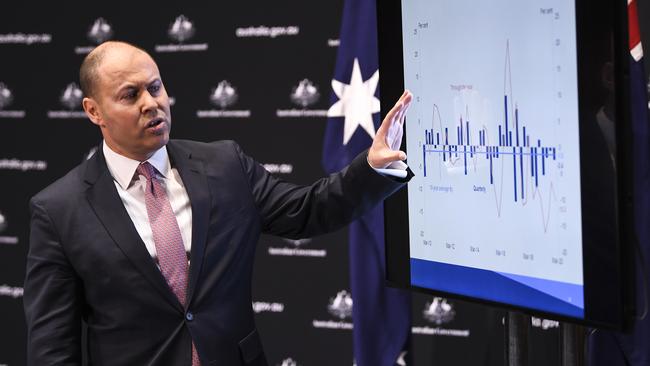Recession: At least now we have a label for our shared pain

The economy contracted by 0.3 per cent in the March quarter, as the bushfires and COVID-19 hit activity, ticking the first of two boxes required for a technical recession, defined as two consecutive quarters of economic contraction. And, we know that the second box will be ticked when the June quarter GDP is released, given that there is no doubt the economy is suffering a severe contraction right now.
But many people wouldn’t have needed to hear it confirmed that Australia has entered its first recession in nearly three decades — they have been experiencing the economic pain for the last few months.
Indeed, the technical definition is a narrow, and I prefer a broader measure; a sustained period of weak or falling real GDP, accompanied by a significant increase in unemployment. And jobs are how most people will feel the real impact of a recession, their own experience and that of those around them. And it is already happening. In April close to 600,000 Australians lost their job while 20 per cent of the workforce became unemployed or underemployed and a further half a million people left the workforce.
For the 4.7 million who have joined the workforce since our last recession in 1992, the jobs impact will be felt acutely.
While unemployment numbers are what people feel, GDP data tells us where we have been and can help frame the challenges ahead.
The key takeaway from the most recent GDP data is not the quarterly contraction but confirmation about the speed, intensity and widespread nature of the economic impact of the pandemic. The cause for concern about Wednesday’s data was that it only captured the first few weeks of restrictions being introduced, but the numbers show that the impact was immediate and unparalleled and indicate more pain to come.
The data showed a fall in residential construction, non-mining private business investment and private consumption, while mining investment rose.
Together, these sectors — which we call private sector domestic demand — make up around three-quarters of economic activity. These activities detracted 0.8 percentage points from economic growth in the first quarter.
We all experienced the panic buying related to COVID-19 and we did see spikes in retail trade as people moved rapidly to stock the kitchen cupboards and set up home gyms, cinemas and offices. However, there was a rapid shift in spending patterns, leading to a fall in household spending in the quarter for the first time since 2008. This shift followed the introduction of social distancing (and travel restrictions), halting activities such as going to a cinema, sporting game and even the dentist.
Looking forward, there won’t be a repeat of the March panic buying. Moreover, the GDP data shows people are saving more, with the savings rate jumping to 5.5 per cent of disposable income, up from 3.5 per cent in the fourth quarter of 2019. This shift reflects people are worried about having enough savings “just in case” something happens.
Households are facing higher unemployment, elevated job insecurity, tepid wage growth, falling house prices, together with concerns about a second COVID-19 outbreak, all against a backdrop of already high debt levels. There are concerns about ongoing weakness in consumer spending, which makes up nearly two-thirds of economic activity. That will have a direct impact on jobs and growth.
The collapse in private spending was combined with supply disruptions as global supply chains ground to a halt when China went into lockdown. This meant we imported less consumer goods and equipment and, combined with a 13.6 per cent fall in spending on overseas travel, imports fell in the March quarter (boosting growth even though it reflects a weak domestic economy).
Export volumes fell too, particularly for rural goods and spending by tourism and foreign students. The weakness in exports, and domestic spending directly affect sectors that are significant employers in our economy, like retail trade, accommodation and food services.
Not surprisingly, government spending in the economy was a big support to growth in the first quarter, and the economy would be much weaker without that. While much of the government’s policies have been aimed at supporting the economy in the June and September quarters, there was still increased spending in the March quarter, such as the deployment of the army to assist during the bushfire crisis. We also saw money spent on boosting intensive care capabilities and pop-up testing clinics in relation to COVID-19. Meanwhile, household income was given the largest boost from social assistance benefits since mid-2012, and that will have increased in the June quarter.
Government spending will continue to support the economy, now and for a considerable time to come. However, the outlook outside of the government sector is challenging. Households will be cautious to spend while businesses aren’t investing.
Jo Masters is the chief economist of EY Oceania.



Confirmation of a technical recession simply means we have a label for the economic pain we have all been feeling.